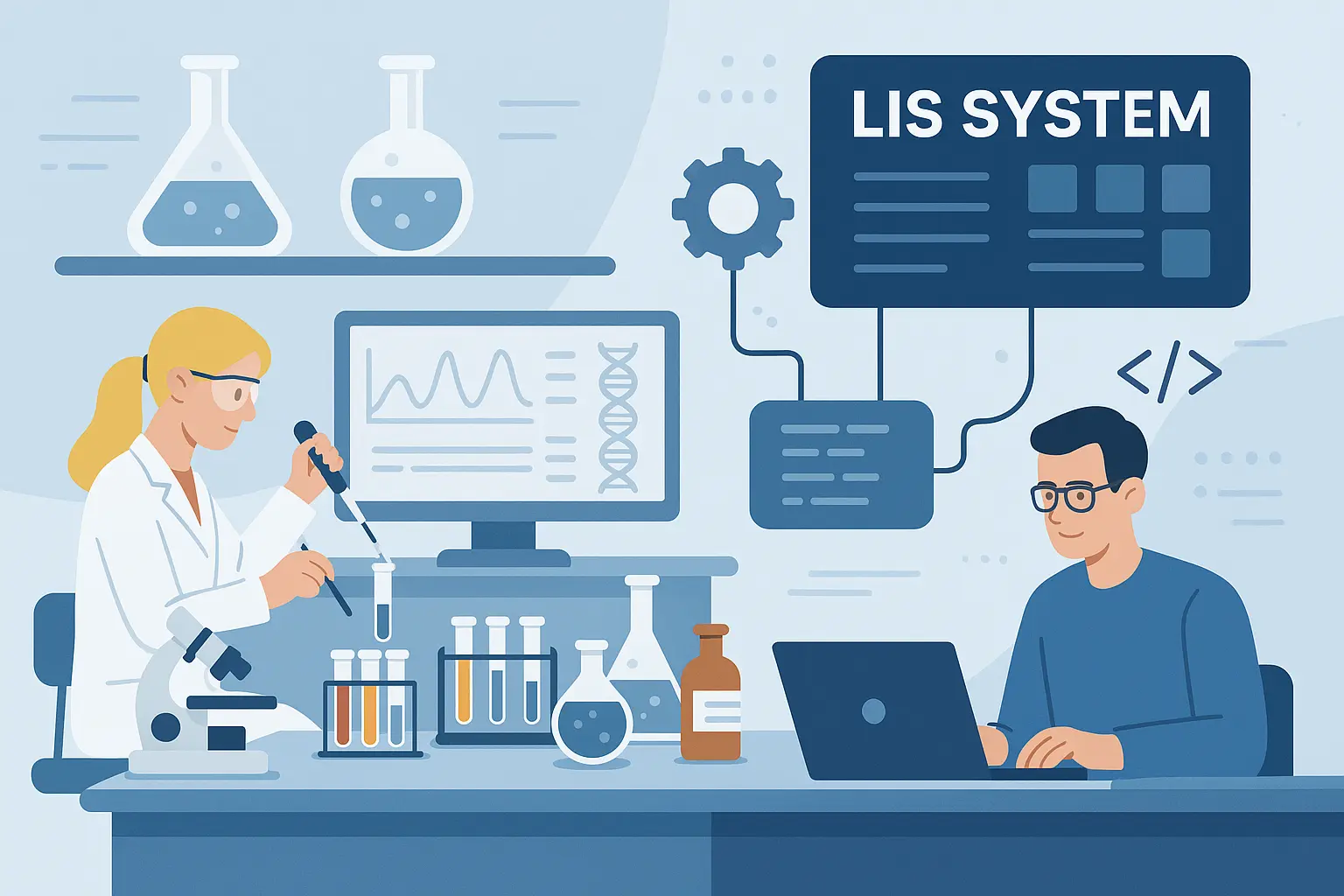Blog
How Billing and Coding Automation Increases Laboratory Revenue
March 28, 2025
Like most business enterprises, molecular, clinical, and anatomic pathology laboratories sustain themselves by receiving payment. What makes them unique is that most of their laboratory billing solutions must pass through Medicare, Medicaid, and insurance companies.
Unfortunately, much to the disdain of lab managers and directors, insurance companies (commonly known as payers within the industry) employ a host of reasons to delay and deny payment.
Medical denials in healthcare rose during the onset of the pandemic, and according to industry publication Medical Laboratory Observer (MLO), medical labs were hit particularly hard, with average denial rates of 15 percent for in-network claims and 30 percent for out-of-network.
In addition to reduced reimbursement rates, ever-changing payer rules, and a growing population of uninsured and underinsured patients, today’s laboratories face unprecedented staffing shortfalls, making it difficult for some labs to prosper.
On-Demand Webinar: Beat Pathologist Burnout & Combat Staffing Shortages

Laboratory Billing Denials are Costly
Although some laboratory billing/lab revenue cycle management (lab RCM) denials are simply part of the cost of doing business, many can easily be avoided. According to Lab Billing Manager Farzad Abdi, most denials result from human error.
“Improper coding and other mistakes play a major role in denials,” he said. “But this is easy to fix with laboratory revenue cycle management automation. By simply automating lab billing and coding processes, we’ve helped some labs increase revenue by as much as 30 percent.”
Learn More: The Top Five KPIs: Driving Successful Lab Revenue Cycle Management
Yet, despite this, lab managers and directors are hesitant to change how they operate. Many aren’t willing to spend resources on improving their laboratory billing solutions, even though the stakes continue to rise.
“Expenses are going up, and reimbursements are going down, so leaving hard-earned money on the table isn’t acceptable,” said Abdi. “Labs that want to grow and sustain their businesses have no choice but to innovate, and an advanced RCM process that offers automatic billing and coding is a step in the right direction.”
How Lab Billing Denials are Triggered
Clean claims depend on accurate coding and adequate knowledge of payer policies and the laboratory billing process. This can be a significant challenge for smaller labs, which may not have a laboratory billing specialist on staff. Therefore, lab managers may need to train the staff or undergo training themselves.
“If a lab insists on manual billing and coding, they’re still going to have to spend money on training and staff,” said Abdi. “Coverage policies are constantly evolving, and each payer has its unique way of doing things. Even certified coders have a hard time navigating all that is involved.”
Another aspect of the RCM cycle that can be problematic is timing. Often, denials resulting from late claim submissions cannot be contested, and the consequences for submitting claims late can be severe.
“There is a shelf life on when claims can be submitted,” added Abdi. “Because of this, lab personnel typically rush to get claims out, even if incorrectly coded. Unfortunately, this approach can result in tens of thousands of dollars lost and hundreds of wasted hours spent on appeals.”
Another factor complicating the laboratory billing process is the growing expectation from some payers and high-volume clients to include volume discounts and other credits directly in their contracts (often calculated daily, weekly, or monthly on a rolling basis). This practice became more widespread during the COVID-19 testing surge."
“Imagine how difficult it is for labs to calculate and operationalize a tiered structure utilizing manual processes,” said Abdi. “Some payers want labs to adjust for alternate payment methods. Now, not only does the lab have rolling totals and discounts to contend with, but it also has a variety of payment methods to manage, too.”
With so much to lose, labs of any size can benefit from advanced technologies and revenue cycle management tools that ease lab billing and coding woes. Platforms like the LigoLab Medical LIS & Lab RCM Informatics Platform help labs save time and increase collectibles by adding easy-to-deploy RCM tools backed by advanced automation.
“With all that’s at stake when it comes to lab billing, it’s important for labs to implement laboratory billing solutions that increase productivity and protect them from errors and losses,” said LigoLab CEO Suren Avunjian. “That’s why the LigoLab platform includes a rule engine and LIS system/lab billing automation that can be customized and easily updated.”
“Labs and their payers can also view, in real time, everything being processed, and any necessary adjustments can be made with the simple push of a button. Because of this, a process that once took weeks only takes minutes, and most importantly, it’s error-free,” he continued.
White Paper: Maximizing Your Lab’s Profitability: The Case for In-House Lab Billing

A Comprehensive Laboratory Information System with Advanced Laboratory Billing Solutions
LigoLab’s billing and coding automation is powered by a proprietary rules engine built into its comprehensive LIS laboratory information system platform - a pathology lab management solution shaped by decades of lab billing expertise and extensive data analysis.
Although sophisticated, the platform’s technology is easy for labs to deploy and doesn’t require specialized LIS software/RCM cycle knowledge. It can be set to run automatically and can be monitored and customized as needed. Its functions are straightforward and intuitive.
“LigoLab’s automation can accurately assign ICD-10 and CPT codes based on NCD, LCD, or payer-specific coverage policy,” said Abdi. “It also learns from past denials and alerts users if a claim has the potential for denial, before being submitted.”
The LigoLab platform also utilizes NCCI edits to alert users when code conflicts or issues with units and modifiers arise.
“One of the mistakes labs make is overusing the same modifier for all cases,” said Abdi. “This will eventually lead to bulk denials and, in some cases, an effort by payers to recoup past claims paid. LigoLab protects labs from this by alerting them about potential denials.”
The secret to how LigoLab’s automation works involves lab revenue cycle management patterns. For most lab financial operations, 95 percent of the RCM cycle work is redundant, so the platform can quickly pick up on a lab’s billing patterns and follow them without error or second-guessing. For the other five percent of cases, all that a lab billing administrator has to do is click “create billing pattern,” and that pattern will be added to the platform for future use.
“In essence, LigoLab completely automates everything that a laboratory billing specialist would do repetitively,” said Abdi. “The only thing required is some monitoring and minor adjustments now and again.”
Add to the mix the fact that the laboratory billing system never gets tired, never asks for days off, never requires training, and never leaves for another job.
“The rules and automation within the platform maximize net collections for the laboratory and mitigate compliance risk,” added Avunjian.
Learn More: The LigoLab Difference: Demonstrating the Power of Lab RCM Automation in the Clinical Laboratory

Laboratory Billing Automation: The Key to Quality and Scalability
The average coder can code around 250 claims daily with minimal errors, but if a lab’s RCM cycle workload is growing beyond the point of manual processes, then automation is a must.
“There is a growing reliance on diagnostic testing within the medical community,” said Avunjian. “Thanks to wider adoption of evidence-based medicine and advances in molecular testing, lab services are now in high demand, and will be for the foreseeable future.”
When COVID-19 first hit, LigoLab partner labs experienced a massive surge in cases. Some labs went from processing a few thousand monthly tests to nearly 500,000 weekly claims. Without lab billing and coding automation, the billing teams at these organizations would not have been able to keep up with the demand.
Relying on manual processes would have made this nearly impossible. Fortunately, with LigoLab’s laboratory billing solutions, the labs scaled efficiently while maintaining a cumulative clean claim rate of over 98 percent.
Another LigoLab customer used manual processes for their client billing operations for several years before taking advantage of LigoLab’s RCM tools and features, including its rule engine and automated lab RCM and coding capabilities.
Soon after the RCM module implementation, that same lab received an immediate payoff for its investment. A laboratory billing process that had taken several weeks, with constant delays because of clerical errors, now took only a few hours. Better yet, the lab’s RCM staff was freed from time-consuming administrative tasks and was able to go after every dollar that was due.
“Within weeks of deploying our solution, the lab was collecting 20 to 30 percent more every month, thanks to a reduction in errors and costly overhead, and this was without an increase in test volume,” said Abdi. “The lab has sustained that level of added revenue ever since.”
Learn More: Leveraging LIS & RCM Integration to Improve the Billing Process
Industry research indicates that this type of RCM cycle result isn’t an isolated case. A recent report found that healthcare companies saved $122 billion in administrative expenses through RCM process software in 2020 alone.
The same report highlighted an additional $16 billion in potential savings achievable by automating nine routine steps in the laboratory billing workflow. This represents a substantial return on investment that laboratories should factor in when evaluating whether to modernize their revenue cycle management strategies.
“When you consider the increase in productivity and profit and the decrease in AR and cost with lab billing and coding automation, any investment in new technology is well worth it,” concluded Abdi.
Choosing a comprehensive and automated solution like the LigoLab platform makes perfect business sense. The platform’s full integration with advanced lab information system (LIS system) functionality and its rule-based capabilities enable labs to automate the laboratory billing process, from order creation to invoice, giving them a considerable advantage that reduces denials and audit risk while increasing net collections and profitability. In addition, because of LigoLab’s automation, labs never have to worry about losing knowledge and skills because of employee turnover.
In addition to automated ICD-10 and CPT coding and client billing, LigoLab’s other innovative lab RCM features include:
- Upfront demographic and insurance verification
- Insurance discovery services
- Whitepages address lookup
- Automated claim validation and error correction
- Real-time data processing workflow queues for heightened visibility
- Detailed statistical reports to help labs monitor trends and KPIs
These features create a modern laboratory informatics platform that routinely outperforms traditional medical LIS and billing software for labs. It enables labs to scale quickly and efficiently, with automation driving revenue growth by minimizing errors and reducing time spent on claims.
Learn More: Choosing LIS Vendors - Guidance for Your LIS Software Upgrade
LigoLab’s End-to-End Medical LIS and Lab Billing Platform
LigoLab is an award-winning provider of innovative end-to-end laboratory information system software for pathology laboratories, servicing nearly 300 facilities nationwide.
As a comprehensive enterprise-grade LIS software with advanced laboratory billing solutions, the LigoLab platform includes all pathology lab management modules needed for an enterprise operation, including modules for anatomic pathology (LIS pathology), clinical laboratory (LIS medical), molecular diagnostics (molecular LIS), lab revenue cycle management (lab RCM), and direct-to-consumer lab testing (TestDirectly and TestDirectly.com), all housed on one powerful and integrated platform that supports every role, department, and case.
LigoLab empowers laboratories to optimize patient outcomes, differentiate themselves in the marketplace, scale their operations, and become more compliant and profitable.
To learn more, contact a LigoLab product specialist and request a brief consultation.






